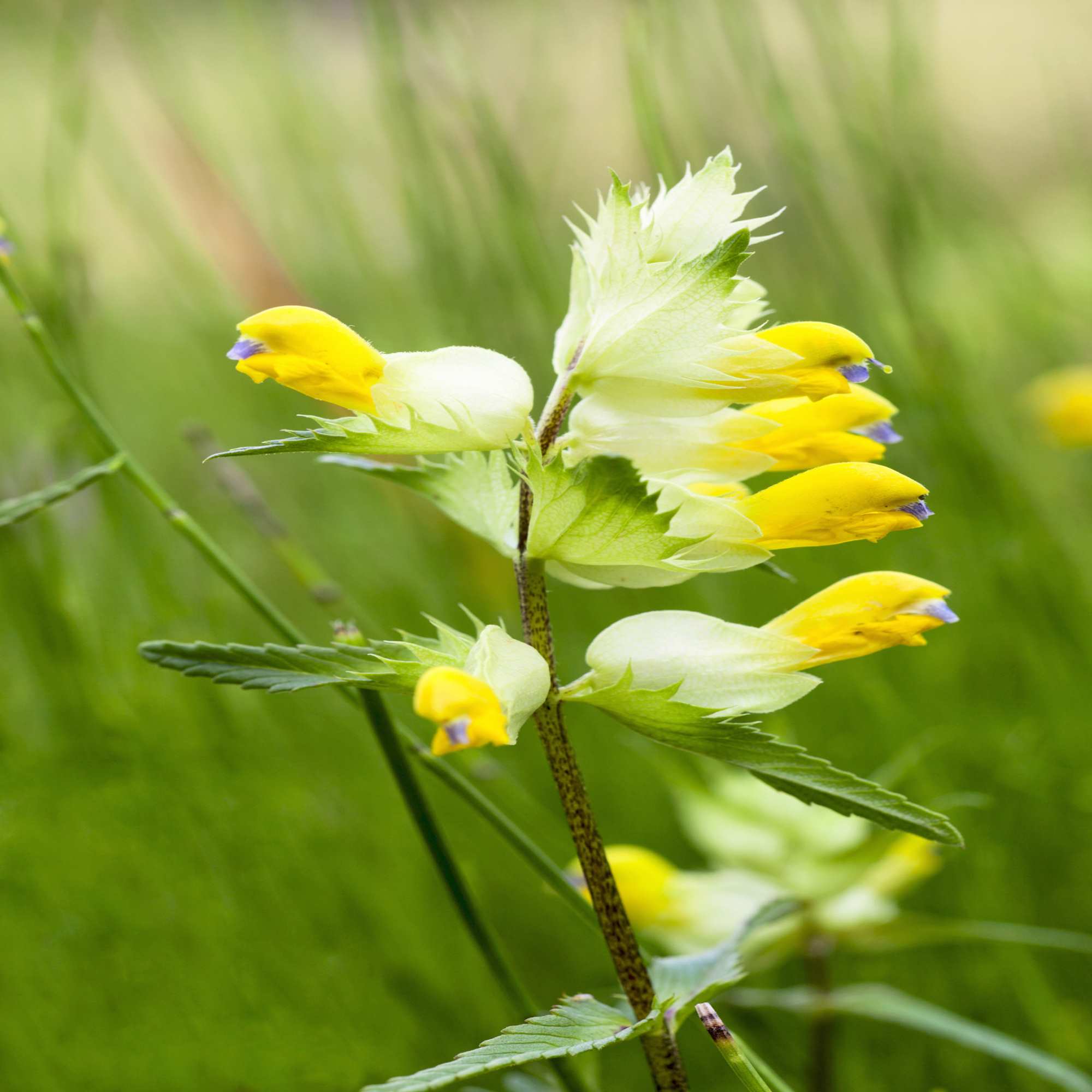Yellow Rattle – Rhinanthus minor 2022 Yellow Rattle harvest
2022 Yellow-Rattle Harvest - Know as the meadow maker
Although a small species in height (45cm), the importance of this native species shouldn’t be overlooked. Here at John Chambers Wildflowers, Yellow Rattle is included in many of our mixes.
Yellow Rattle has a semi-parasitic growth habit, latching on and stripping moisture and nutrients out of grass roots. Although this sounds a little brutal, grasses can still grow, just not as vigorously therefore leaving the sward open for other species to bloom.
It not only benefits from the sward opening more, but also decreasing the height in which the grasses will grow, allowing for more light to the soil surface.
Yellow Rattle is an annual species, once established it is a prolific self-seeder so will spread quickly and establish well.
It’s found naturally in a wide range of areas including verges, rough grassland, wet meadows, and marshlands too.
Yellow Rattle does prefer sunnier conditions but will establish in dappled shade.
The name given ‘Yellow Rattle’ refers to the colour of its flowers in summer, and the noise of the seed within the seedpod once dried. It’s said that years ago it was used for treatment of disorders of the eyes.
It is a member of the Scrophulariaceae family and is abundant throughout Europe and temperate Asia.
Yellow Rattle seed is available from John Chambers Wildflowers now.
Estasblishment
Introducing Yellow Rattle in your meadow
Yellow Rattle is normally best sown in Autumn after the fresh seed has dried. By mimicking the wild process, along with some helpful tips you’ll have Yellow Rattle established in no time.
Sowing rate for this species can be anywhere between 0.5g/1g per square meter. Sow onto bare soil (when sowing a mix containing grass) or into very short cut grass. Sow the seed and gently stamp or roll into the area. It can be sown anytime from August through till the end of September (weather dependent).
Introducing this into a meadow creates the opportunity for other species to thrive as competitive grasses are unable to grow as vigorously.
Ideally it needs to be introduced into the meadow mixture when it’s sown. However, it is possible to grow this in trays, in the ratio of one part wildflower, two parts grass, ensuring it has something to feed from.

